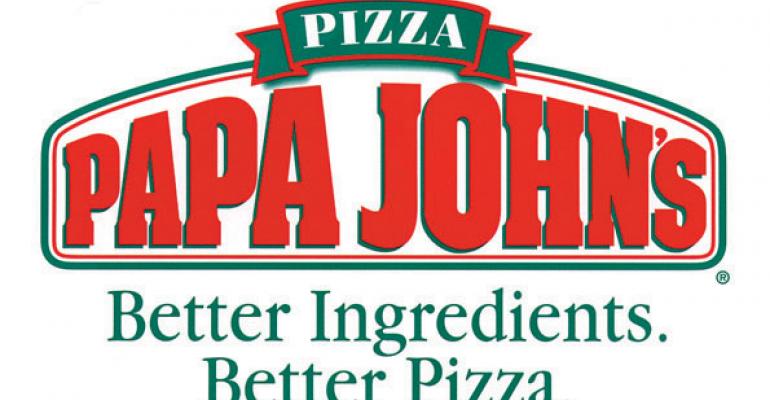
Steve Ritchie, president and chief operating officer of Papa John’s International Inc., wants all workers at the chain’s 4,900 locations to know that they can advance in the organization as far up as the C-suite. And he has the perfect example of this progress: Himself.
Ritchie began working at Papa John’s as a delivery driver in 1996, earning $5 an hour at a company-owned location in Louisville, Ky.
He became the restaurant’s general manager three months later, then worked his way through the organization before becoming COO in 2014, and then company president, running daily operations, in 2015.
“I started as a driver,” Ritchie told Nation’s Restaurant News. “We tell our employees that your journey starts at Day One, as a driver or an in-store team member. The job can provide you with development if you want to move through the organization. And anybody could eventually be the next CEO.”
“People development” is a key element for Papa John’s, and Ritchie credits that development for the chain’s run at the top of various consumer surveys. The Louisville, Ky.-based chain finished with the highest ranking among pizza chains in the latest American Customer Satisfaction Index for the 15th time in 17 years.
That performance also comes along with a remarkably consistent sales streak. The chain’s same-store sales have been either flat or positive for 12 straight years — a period that included the recession. That’s a long run for a chain that operates in perhaps the most competitive segment in the restaurant industry.
Papa John’s is the 25th largest restaurant chain in the U.S. based on systemwide sales, according to Nation’s Restaurant News’ Top 100 census. And yet it is only the fourth-largest pizza concept, meaning it is often overlooked in a world with Pizza Hut, Domino’s and Little Caesars.
“We’re still the baby in the pizza category,” Ritchie said.
Papa John’s competitors have overshadowed its performance, but the chain has maintained strong sales growth even as Little Caesars and Domino’s Pizza surged.
Same-store sales rose 4.2 percent in the U.S. last year, on top of 6.7-percent growth the year before, and a 4-percent increase the year before that — a three-year growth rate of about 15 percent.
Systemwide sales, a more accurate measure of a chain’s overall performance, have grown 13 percent since 2013.
Papa John’s stumbled out of the gate early this year — same-store sales were flat in the first three months of 2016, while Domino’s same-store sales rose 6.4 percent and Pizza Hut grew 3 percent.
Nomura analyst Mark Kalinowski says Pizza Hut will take back more share. He downgraded Papa John’s stock Wednesday, along with Domino’s, citing Pizza Hut’s strength.
“We cannot ignore the possibility that a better performing Pizza Hut US could limit the future upside to Papa John’s North America same-store sales in the coming quarters,” Kalinowski wrote.
Papa John’s executives have said that sales have improved since some early-year struggles. And Ritchie echoed the sentiments of many in the pizza segment by suggesting that there is room for all of the concepts to grow.
Unlike, say, burgers, pizza has a hefty presence among smaller and independent concepts despite the emergence of the four biggest chains, as well as chains such as Papa Murphy’s and Marco’s Pizza. National pizza chains still make up less than 50 percent of the overall category.
“Over the last five years, there’s basically flat to 1 percent [pizza] category growth,” he said. “It’s a $40 billion category in the US. Ourselves and the other national chains, if you take the cumulative effect, it’s showing there’s a shift occurring broadly from independents and regionals throughout the category.”
The major element in that shift is technology. Papa John’s gets 55 percent of its orders through digital channels, an increase from 28 percent as recently as 2010.
“Independents are not even remotely close to those kind of mixed numbers,” Ritchie said, noting that many use third-party aggregators that charge commission rates that drive up costs.
The intense competition this year has led to something of a price war among the major players, which Papa John’s was somewhat reluctantly forced to join after some early-January struggles.
This is where the chain’s long-held quality positioning comes into play. “We’ve always been able to demand $1 or $2 more than our competitors,” Ritchie said. “We stay aggressive. But we can command a premium versus the rest of the category. Our customers are obviously willing to pay a little bit more for high-quality Papa John’s pizza.”
All that said, consumers’ perception of “quality” has shifted over the years, forcing Papa John’s to work on the ingredients in its pizza and remove some to make items more natural. Over the past couple of years, the company moved toward a “clean label,” without artificial ingredients on its toppings. This year it agreed to stop sourcing chicken with antibiotics and named a chief ingredient officer in Sean Muldoon.
“If you’re for better ingredients, better pizza, you have to walk the talk,” Ritchie said. “We’ve been way up front in the pizza category. Some of the other brands and chains are trying to follow suit with what we’re doing.”
And Ritchie is a Papa John’s executive who himself walks the talk. In 2005 he became a franchisee, and to this day he operates his own locations.
“I always joke with folks that I get here early and the first numbers I check are my franchise stores,” he said. “It gives me perspective. I look at things through the lens of a franchisee. As a franchisee, it drives credibility with our operators. I’ve got to eat a little bit of my own cooking.”
Contact Jonathan Maze at [email protected]
Follow him on Twitter: @jonathanmaze





